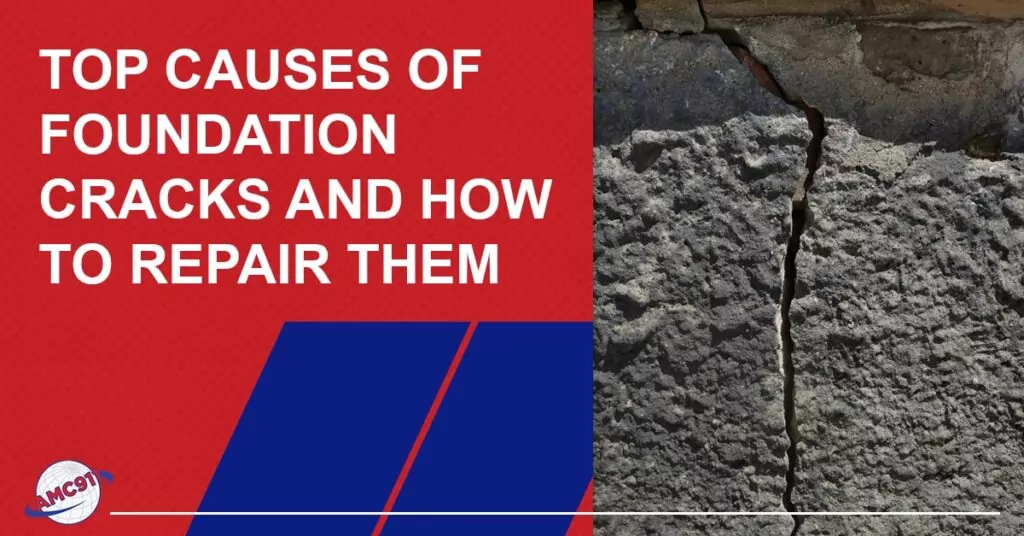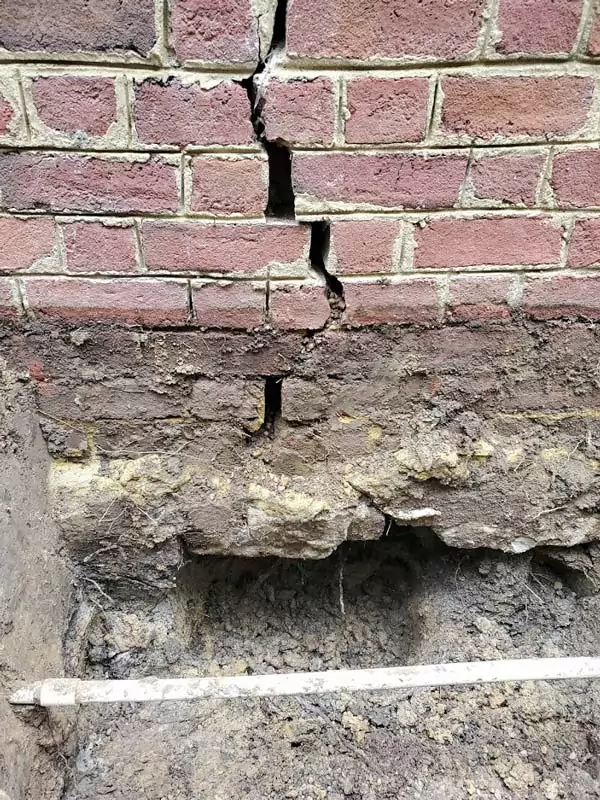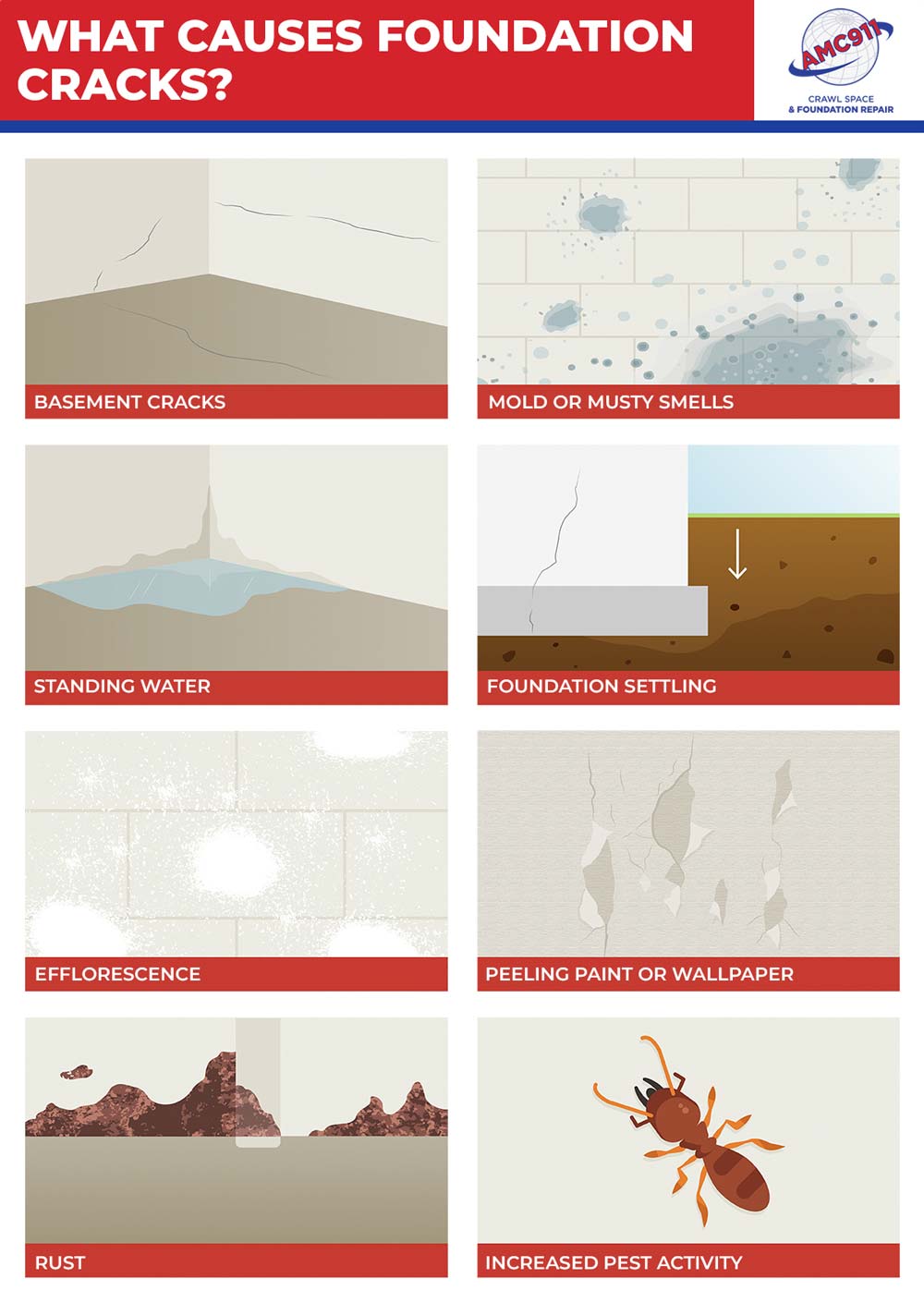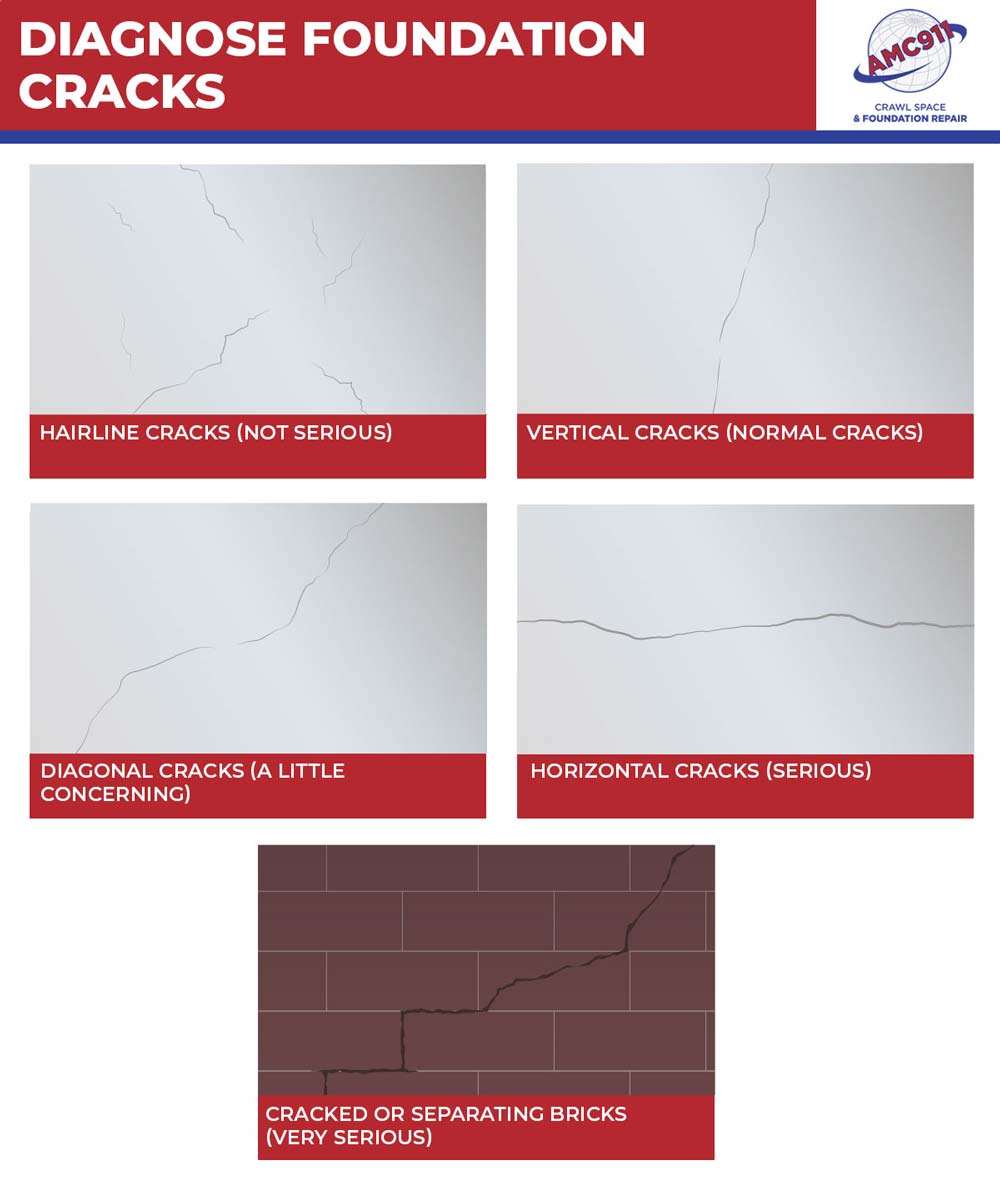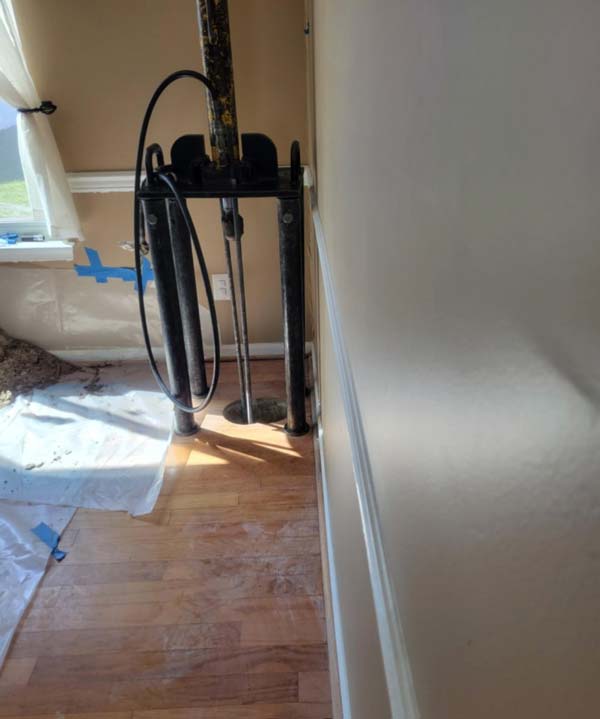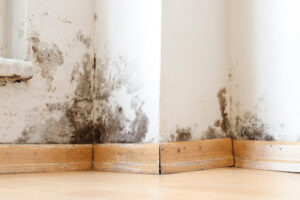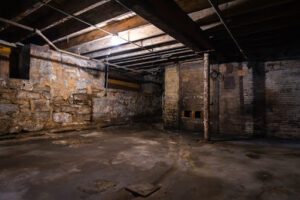Cracks in the foundation can be an alarming sight for any homeowner. The causes behind them are varied, and the solutions depend on both the crack’s size and its root cause. However, what’s more important than simply knowing how cracks form is understanding how they affect your home’s structure in real-life situations—and how you can prevent costly damage by addressing them early.
This article will explain the most common causes of foundation cracks, explain how to assess their severity and share real-life examples of homeowners who have successfully tackled these issues.
What Causes Foundation Cracks? (A Homeowner’s Perspective)
Foundation cracks can be a concerning sight for homeowners. Not only do they affect the appearance of your home, but they can also signal deeper structural issues. Understanding the foundation cracks will help address them properly and ensure your home’s stability.
Here, we’ll explore the common foundation crack types and causes and their implications for homeowners.
- Soil Shifting and Erosion: The soil beneath and around your home naturally shifts over time. The soil can expand or contract after heavy rain or drought periods, stressing your foundation. Homes with expansive soils are particularly prone to cracks, especially when drainage isn’t properly managed.
- Water Damage: Inefficient gutters and drainage systems can cause water to pool around your foundation, weakening the surrounding soil and leading to cracks.
- Temperature Fluctuations: In colder climates, the freeze-thaw cycle causes concrete foundations to expand and contract, often resulting in cracks. This issue is more common in regions with extreme temperature shifts between seasons.
- Natural Settling: All homes settle over time, which can lead to minor cracks as the structure adjusts. However, significant cracks can occur if the settling is uneven or if the home was constructed on unstable soil.
- Tree Roots: Trees and vegetation planted too close to a house can cause problems as their roots grow beneath the foundation. The roots exert pressure and draw moisture from the soil, leading to cracking and, in some cases, structural damage.
- Poor Construction: Subpar construction practices, such as improper soil compaction before pouring the foundation or using low-quality materials, can result in weak spots that eventually crack under pressure.
- Seismic Activity: In earthquake-prone areas, even small tremors can stress foundations, causing new cracks or widening existing ones. Homes not built to withstand seismic forces are particularly vulnerable to this damage.
- Hydrostatic Pressure: When water accumulates around a foundation, it creates increased hydrostatic pressure against the walls. This pressure can cause the walls of your foundation to bow and crack, especially in basements.
How To Diagnose Foundation Cracks: Signs You Can Look Out For?
When you first notice foundation cracks, it’s natural to wonder if they signal a serious problem. Knowing how to differentiate between minor cosmetic cracks and those that require professional attention can save you from future headaches.
Here’s a guide to help you diagnose foundation cracks and other signs of trouble.
- Hairline Cracks (not serious): These small, thin cracks usually occur due to the natural curing process of concrete. While often harmless, you should keep an eye on them over time. If the cracks start to widen, it could be a sign of underlying foundation issues, like settling or moisture problems, and may need further inspection.
- Vertical Cracks (normal cracks): These typically happen as your house settles naturally, especially in newer homes. They’re generally not a cause for concern unless you notice them widening. Regularly check these cracks during your home’s early years to ensure they stay stable.
- Diagonal Cracks (a little concerning): Diagonal cracks may indicate uneven foundation settling. Uneven settling happens when one part of your home shifts more than another, causing stress on the structure.
- Horizontal Cracks (serious cracks): Horizontal cracks are more serious and often result from pressure, such as water buildup or expansive soil pushing against your foundation walls. These cracks are a warning sign of major structural stress. If you find horizontal cracks, get a professional to assess them immediately, as they can compromise the integrity of your home’s foundation.
- Cracked or Separating Bricks (very serious): Cracks or gaps between the exterior bricks of your home are another warning sign that your foundation may be shifting. This issue can often be seen along with cracks inside the home. If you see separating bricks, check your foundation before the problem worsens.
By watching for these telltale signs, you can stay ahead of potential foundation problems and address them early on. The earlier you detect and repair foundation issues, the less likely you’ll face serious structural damage or expensive repairs down the road. If you’re ever unsure about the severity of any cracks or signs of movement, it’s always best to consult a professional for peace of mind and an expert opinion.
Real-World Examples Of Foundation Crack Repairs
Foundation issues can be complex, with each home presenting unique challenges. Hearing from homeowners who’ve gone through the repair process can offer insight into how cracks are addressed and resolved. Below are two real-world examples of foundation crack repairs, with testimonials that showcase the personalized solutions and care given to each situation.
Madoka: Cracked Foundation Repair Near A Tree
Madoka experienced a foundation crack near a river birch tree that had been planted too close to the house.
Madoka recalls, “We used AMC911 twice over the course of a few years. First, they found a cracked foundation by the river birch, which we ended up cutting down because it was way too close to our house. A few years later, we noticed our doors were sticking. We called Rob (our foundation guy) who recognized our initial issue and diagnosed our house.”
After a thorough inspection, steel piers were installed under the slab to stabilize the foundation. What made this experience notable for Madoka was the level of care and professionalism they received from their foundation expert.
“He was very understanding, returning to our house to explain what he thought the issue was multiple times. He was very kind, professional, and trusted. After service care was excellent as well. He made sure we understood what was going on, what was done to our house, and what to look for. We talked to two other companies before we decided to use AMC,” Madoka shared.
Madoka’s experience highlights the importance of transparency and communication throughout the foundation repair process, which ensured they felt confident in the solutions provided.
Christopher: A Brick Skirt Wall Problem, Not A Foundation Crack
Christopher faced a different challenge. He had noticed a crack in his foundation for years but hadn’t taken action until he began preparing to sell his 101-year-old home. Multiple big-name foundation companies came out for inspections and provided quotes for expensive and extensive repairs, all recommending the installation of piers and significant structural work.
However, Christopher decided to get one more opinion. He shared, “I contacted AMC911. Dan Baxter came out, took a quick look, and in about 10 minutes informed me my foundation was fine. The crack was in my brick skirt wall. My house is 101 years old, and what I needed was a mason to remove and replace the exterior skirt wall. For good measure, they would underpin the section of the foundation.”
Rather than the costly repairs suggested by others, the actual issue was with the brick skirt wall. The foundation itself was sound. The solution involved removing and replacing the damaged brickwork and some preventative underpinning. This approach saved Christopher substantial money and addressed the real problem.
His testimonial illustrates the value of having a knowledgeable professional correctly identify the source of the problem. Rather than paying for unnecessary work, Christopher received an honest assessment and an efficient, cost-effective solution.
Steps To Repair Foundation Cracks (Firsthand Solutions)
Foundation cracks can be a concerning sight for homeowners, but depending on the type and severity of the damage, various repair methods are available. The following are real-life solutions used by homeowners to address their foundation cracks.
- Epoxy Injection: Ideal for small, non-moving cracks, this method involves injecting a high-strength epoxy to bond and strengthen the cracked concrete. You can use this to seal hairline cracks in your foundation walls before they can widen.
- Polyurethane Foam: This solution is often used for cracks caused by water infiltration. Polyurethane foam expands and creates a watertight seal. A homeowner with frequent basement leaks will find this method useful to prevent future flooding.
- Carbon Fiber Straps: In cases of serious foundation shifting, carbon fiber straps can stabilize the wall and prevent further cracking.
Preventing Foundation Damage In The Future
While addressing existing cracks is essential, proactive steps can help homeowners avoid new foundation issues.
Here are some proven methods to maintain foundation health and prevent future cracking.
- Proper Drainage: Ensure your gutters, drains, and downspouts direct water away from the foundation. One homeowner resolved a recurring issue with foundation cracks after installing a French drain system to improve drainage.
- Soil Maintenance: Monitor the soil around your home and water it during dry spells to prevent excessive shrinking and expansion.
- Regular Inspections: Perform routine checks for cracks and other signs of foundation stress, catching issues early before they require costly repairs.
- Foundation Waterproofing: Applying a waterproof sealant to your foundation can protect it from moisture infiltration, which can weaken the foundation over time.
When addressing foundation cracks, understanding the causes and choosing the right repair method is crucial to protecting your home. AMC911 Crawl Space & Foundation Repair is your trusted partner for expert foundation leveling and repair solutions. With years of experience, we specialize in diagnosing the root causes of foundation issues and providing reliable, long-lasting repairs. Whether dealing with minor cracks or more serious structural concerns, AMC911 has the tools and expertise to restore your home’s foundation. Contact us today for a free inspection, and let us help you keep your home safe and secure.

